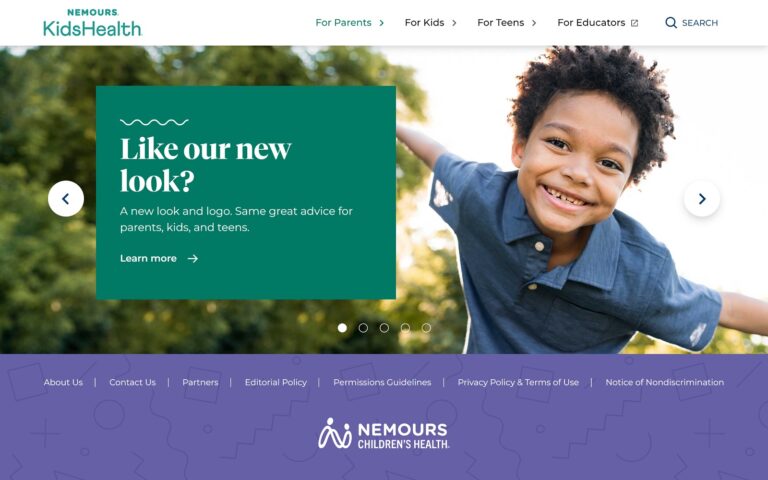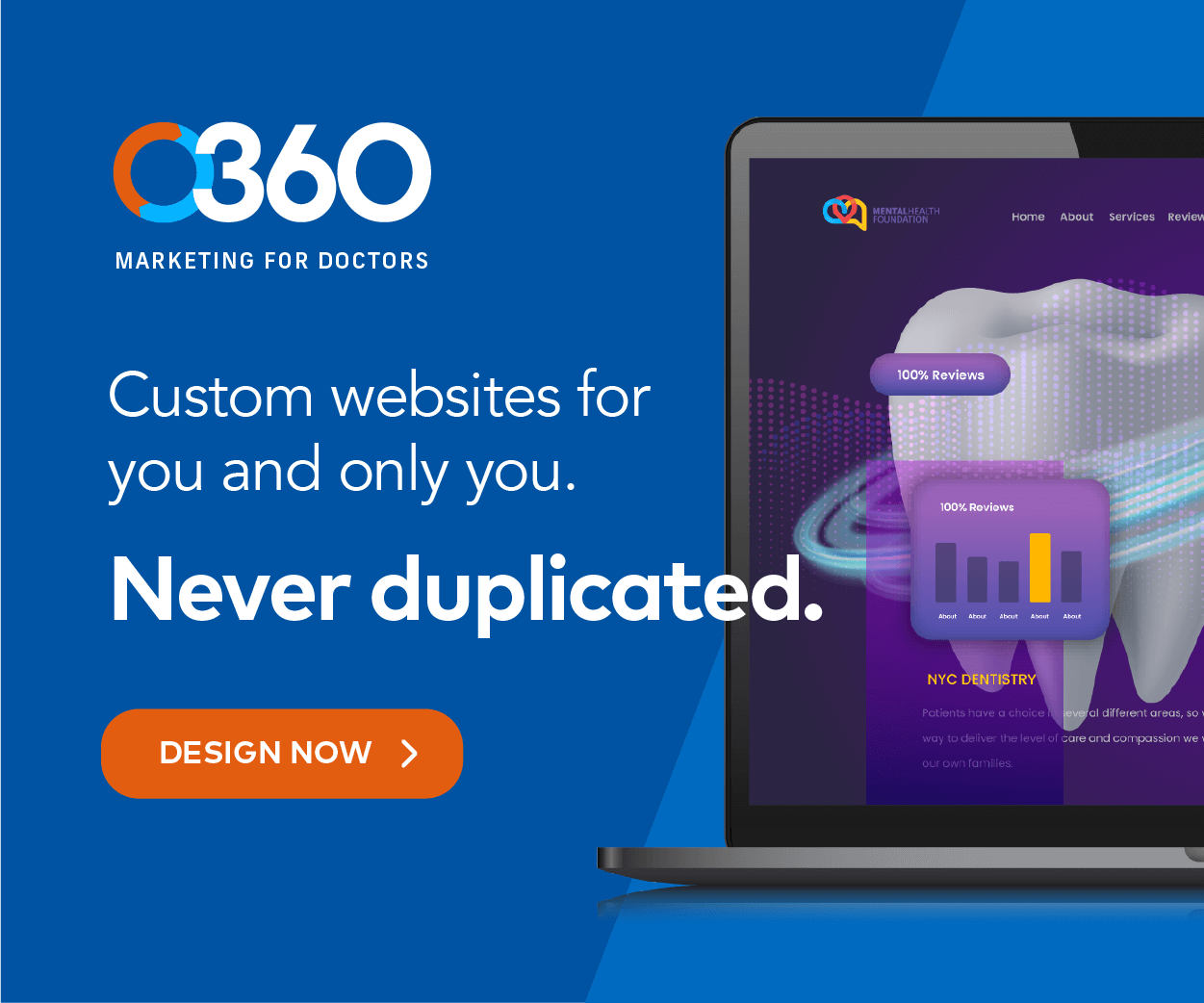Every website designer keeps conversion rates in mind, and those conversion rates for psychology and psychiatry websites remain a critical cornerstone in the creative objective. Mental health website designs need efficient and effective models to convert potential customers into patients for your practice.
These six primary design principles for your mental health website will help your practice achieve greater conversion rates.
1. User-Friendly Design
Ease of navigation is the key standard in user-friendly psychiatry website design. Visitors should be able to easily find and use a navigation menu that quickly explains how the site organizes content, and that content should be consistent throughout every page of the website.
If the organization is difficult to understand or follow, the visitor will be less likely to linger and click, and this leads to lower conversion rates. This is even more important in mental health websites as many of patients may suffer from anxiety and depression and be less patient than an average visitor.
In addition, an mental health website layout should include the basics, such as phone numbers, emails, and addresses that are featured in the footer. Many sites make it difficult for potential patients actually to contact a mental health professional. More so than in any other industry, personal contact is a must for building trust and a growing client base.
People tends to remember friendly individuals, and they also enjoy user-friendly design.

2. Responsive Design
Site visitors are demanding efficiency and ease-of-use from whatever page they are on, or from any type of device. The number of mobile-only Internet users now exceeds desktop-only Internet users in the U.S. A psychiatry website development company should ensure that content organization exploits the responsive website design to keep patients navigating easily and converting. Your psychiatry website’s design should be responsive regardless of screen size across a wide variety of devices so potential patients can easily read and digest the content from any tablet, smartphone or desktop.
A responsive website is like water. It adapts itself no matter what devices it’s on.

3. Strong Calls-to-Action
This element is a requirement on every page. Highlighting your call-to-action buttons is undoubtedly one of the most crucial factors for positively influencing conversions. A mental health website can use either a “Request an Appointment” or “Contact Us” form, but either one must be highly visible to website visitors.
Another element in the CTA is the link to Google Maps, which will clearly show the exact location of your psych practice. This also encourages site visitors to take the next step and contact your practice. This link should also be included with contact details or other relevant positions on the site, including the name of the doctors and therapists.
Call-to-action is the “little push” that help getting your website visitors to your side.

In addition, positioning the CTA inside a container, such as putting the words “Request an Appointment” inside a button or circle will make the CTA easily noticeable.
4. Simple, Clear Terminology
So many exacting phrases in healthcare are based on Latin roots, yet so few people recognize them. A good design will not assume that visitors are familiar with all the services or products, and the content will be written in clear, concise wording so site visitors understand almost instantly what your practice is about.
A good design will take complex terminology and simplify it without talking down to potential patients. Express complex topics in an uncomplicated manner. Site visitors will comprehend the message far more easily from easy-to-read language, and that will help them navigate the site and respond to the CTA.
Make it easy for both patients and their loved ones to find information regarding all important mental issues and conditions, from depression, anxiety, and PTSD, to more serious mental illnesses like Schizophrenia.
As clear as crystal! Nobody likes thinking too much.

5. A Balanced Design
Great psychology website design will strike a balance between aesthetics and conversion goals to effectively market products and services. The website must be attractive to grab the visitor’s attention with an overall model that is eye appealing and captures the essence of the brand.
A great design will allow the content to shine without the disruption of convoluted graphics, which should enhance the work done on the backend to influence visitor and increase conversions.
A good balance is essential to achieve the highest return on investment.

6.High Quality, Unique Images
Simply posting stock photos on a website does little to increase branding and brand awareness, especially in psychology and psychiatry. Images must be unique to the organization, perhaps featuring staff along with the facilities. This sets the organization apart as caring and welcoming. The photos must also be very high quality, well planned, and with the ability to catch the eye and boosting
the site’s authority.
Uniqueness makes you stand out, it also makes you memorable.

Other Development Factors
These six principles represent the crucial planks in a strong foundation for building a mental health website. At the same time, a great designer will include these other elements by interweaving them throughout the site.
Include the Story
Each individual mental health practice has a story on how they began, why they want to assist their patients and how they intend to do so. The site should include that story through the colors, content, photos and organization on the site. This gives patients a greater understanding of the philosophy and dedication of the organization. At times mental health websites overdue the use of photos of patients that are in emotional pain. While that may be a way to help patients connect, you want to balance that with the use of happy patients, presumably after your treatment has been successful as well.
Include Multimedia
In addition to images, other types of media can enhance the message and content making them pop out from the screen. Webinars, videos, podcasts and white papers all represent excellent design elements that can convey additional information to potential patients and engage them with the brand.
O360 offers a collection of mental health patient education videos to add to your website.
Use an Authoritative Blog
Adding an authoritative, active blog will enhance SEO in addition to conveying information about medical concerns that will help your patients. If the practice does not have staff or time to produce steady content each week, medical bloggers can produce knowledgeable, high-quality content on a fixed basis.
Make sure to cover all important brain and emotional conditions, personality disorders, support for loved ones as well as new anti-depressants and modalities for mental disorder treatments.
Optimize for Mobile
In the Internet of Things, mobile-only users now outnumber desktop users. A website designer must be extremely proficient at mobile optimization, allowing a site to be formatted to any screen size or viewing platform. A speedy, responsive website is critical no matter what device accesses the information.
Mental health patients need to be able to reach their psychiatrist or therapists quickly at times. This is important for critical times like a suicide watch situation. You don’t want a critical patient to be lost finding your info on their phones.
Booking Appointments Online
For psych websites, visitors now expect easy online booking of appointments with their health care provider. Patients like the capability to make appointments without picking up the phone. It is very difficult for a patient with a lot of mental disorders to open up to others, even if it is admitting a problem over the phone with front office staff.
Adding an online booking feature on the website will improve the online experience and advance the perception of the site. The added bonus is that this feature frees up the staff for other responsibilities.
These primary principles of mental health website creation will help to increase conversions for the medical practice and maximize site traffic.
Ability to Update the Website with Fresh Content

Search engines more frequently “crawl” websites that have fresh and every changing content. To have the ability to continually post new mental disorders and treatment content to your site, the developer will install and train you on a content management system.
These are quite easy to use and gives you greater control over the information that you share publicly. Template based websites don’t have this capacity. In most cases, you are limited in what you can do initially and your ability to keep it fresh and relevant. While mental health website template can be a cost-effective solution, especially for individual therapists, it is important to learn about the problems with template-based websites.
A professionally designed website will allow you to share information in ways that you are comfortable with. As mentioned, many mental health patients send weekly newsletters about upcoming events and promotions; other use a blog to communicate. Some do both. Discovering what feels most comfortable and suitable for your practice can help you decide which outlets are best for you so that you can best highlight your services. Your web developer will be able to more fully discuss these options with you.
Search Engine Friendly Websites

Each search engine employs different parameters in their search function. Professional website builders spend a lot of time staying current with these parameters so that their client’s websites are found when anyone runs a search.
Sure, some clients will come to you by word of mouth, but most likely, they will find your practice by running an internet search for a psychologist or other mental health providers in their area. Websites built with a template or website builder tool won’t be as search engine friendly. Learn about our SEO services.
Browser Compatibility

People use many different web browsers to access their favorite sites. Healthcare professionals want the web presence they publish to appear the same regardless of the browser a client uses. This is not guaranteed with template websites. A professional web designer will ensure that no matter how potential clients find your business, they will have the same experiences and receive the same information. This specialized knowledge and attention to detail are what you get when you invest the time and money to build a professionally designed site.
Going through the website design process doesn’t have to be a difficult process. It does require thought and exploration. A professional mental health website developer like O360 will work with you to develop your desired product. They will also work to stay within your budget while also highlighting the various website functions that you may find useful to promote your business. The time is well spent.
Take a look at the best mental health websites designed recently to get more inspiration.














